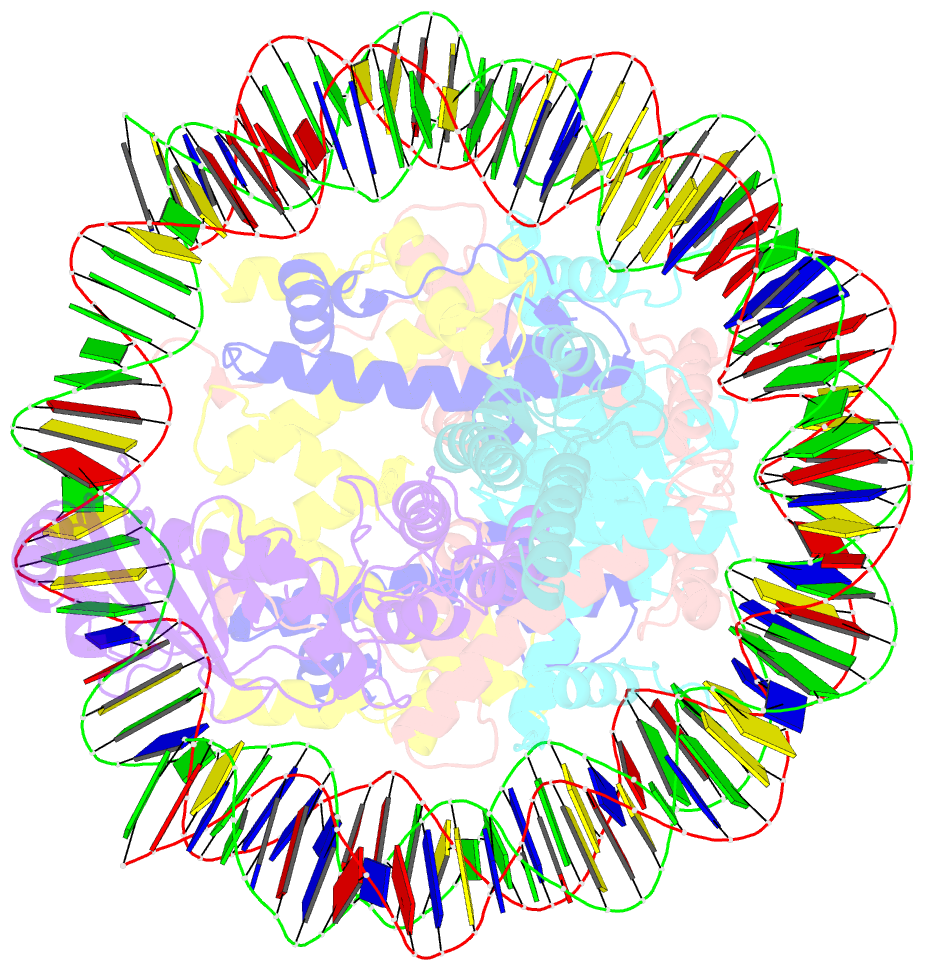Summary information and primary citation
- PDB-id
- 7jzv; SNAP-derived features in text and JSON formats;
DNAproDB
- Class
- ligase-DNA
- Method
- cryo-EM (3.9 Å)
- Summary
- cryo-EM structure of the brca1-ubch5c-bard1 e3-e2 module bound to a nucleosome
- Reference
- Witus SR, Burrell AL, Farrell DP, Kang J, Wang M, Hansen JM, Pravat A, Tuttle LM, Stewart MD, Brzovic PS, Chatterjee C, Zhao W, DiMaio F, Kollman JM, Klevit RE (2021): "BRCA1/BARD1 site-specific ubiquitylation of nucleosomal H2A is directed by BARD1." Nat.Struct.Mol.Biol., 28, 268-277. doi: 10.1038/s41594-020-00556-4.
- Abstract
- Mutations in the E3 ubiquitin ligase RING domains of BRCA1/BARD1 predispose carriers to breast and ovarian cancers. We present the structure of the BRCA1/BARD1 RING heterodimer with the E2 enzyme UbcH5c bound to its cellular target, the nucleosome, along with biochemical data that explain how the complex selectively ubiquitylates lysines 125, 127 and 129 in the flexible C-terminal tail of H2A in a fully human system. The structure reveals that a novel BARD1-histone interface couples to a repositioning of UbcH5c compared to the structurally similar PRC1 E3 ligase Ring1b/Bmi1 that ubiquitylates H2A Lys119 in nucleosomes. This interface is sensitive to both H3 Lys79 methylation status and mutations found in individuals with cancer. Furthermore, NMR reveals an unexpected mode of E3-mediated substrate regulation through modulation of dynamics in the C-terminal tail of H2A. Our findings provide insight into how E3 ligases preferentially target nearby lysine residues in nucleosomes by a steric occlusion and distancing mechanism.





